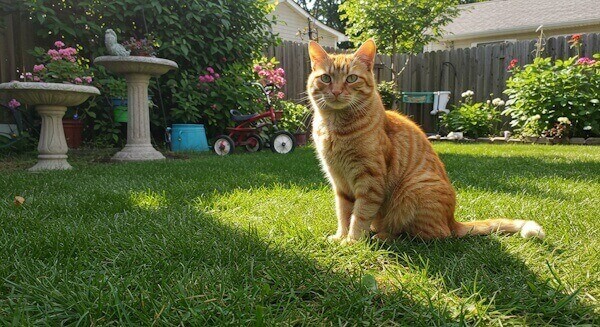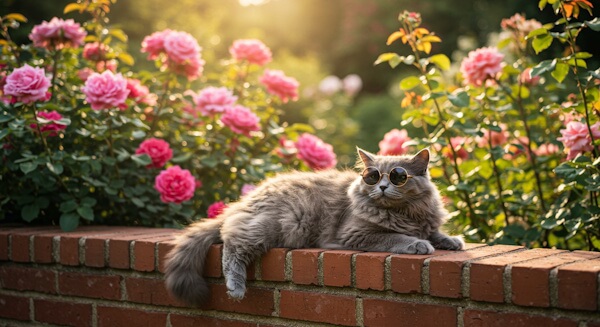AI image prompts are the backbone of successful image generation, shaping everything the model produces. If you’ve ever wondered why your AI images sometimes turn out wonky or stunning, it’s probably all about the prompt.
Clarity in prompts gives you tighter creative control and ensures the output matches your vision. Get it right, and you’ll see sharp, expressive results. Get it wrong, and even the smartest AI meanders aimlessly.
Below, we will discuss why clarity is so powerful, how to achieve it, and how to identify common prompt mistakes before your next masterpiece goes awry.
The Importance of Clarity in AI Image Prompts
Getting spectacular images from AI isn’t about luck; it’s about giving clear, detailed instructions. When prompts hold specific direction, the AI creates what you actually want, rather than guessing and surprising you in all the wrong ways.
Consider these two very basic prompts that illustrate in very simple terms, the importance of more when it comes to AI prompting:
- “A dog in a park”
- “A small brown dog joyfully catching a red frisbee in a sunny city park, surrounded by green grass and tall oak trees”
Which image will feel more real and alive? The second. It’s specific and paints a mental picture. The first is so vague that the AI might serve up just about anything with fur and a tail.


Common mistakes with unclear prompts:
- Using vague words like “nice,” “cool,” or “pretty”
- Leaving out key details (subject, background, mood)
- Mixing too many ideas into one sentence
- Forgetting style cues (modern, vintage, cartoon, realistic)
- Not stating what’s most important in the scene
Want a deeper dive with tools and examples? Check out our AI image generators guide.
How AI Interprets Prompts
AI models aren’t mind readers. They break down language literally, using the words and context you provide to decide what to draw. Swap out one word and you get a totally different scene.
Ambiguous language leads to mixed results. Words like “old,” “large,” or “cool” are open to various interpretations. That’s why models need precise terms like “Victorian house,” “elephant-sized,” or “icy blue lighting.”
AI’s best results come from clear direction, just like a GPS that needs a full address rather than “somewhere nice in town.” For more on why clarity matters to AI, check out the Effective Prompts for AI: The Essentials from MIT.
Consequences of Unclear Prompts
What happens when prompts leave too much to guesswork? Chaos and frustration. Here’s what shows up when clarity is missing:
- Irrelevant objects or odd backgrounds
- Wrong colors or styles
- Missing key items entirely
- Surreal or mismatched compositions
Some typical issues with fuzzy prompts:
- Parts of people or animals are missing or merged together
- The mood or setting feels off
- Text or details are unintelligible
- Every AI run produces wildly different images
To read more about AI faux pas, read: AI Fails: Funniest Glitches and Unexpected Results You Have to See.
Best Practices for Writing Effective AI Image Prompts
Sharp prompts take practice, but learning a few tricks makes a big difference. This type of direction is called “prompt engineering,” and the more you utilise it, the better your results will be.
Techniques for better AI image prompts:
- Spell out your main subject (be specific)
- Add style cues (realistic, cartoon, abstract)
- Include details of setting, mood, and colors
- Use adjectives with purpose, not just fluff
- Isolate commands with commas or simple sentences
- Keep prompts concise—avoid run-ons or tangents
Explore more Prompt Engineering Techniques for hands-on tips.
Optimizing for Context and Detail
Context breathes life into AI image prompts. Give the AI your “creative GPS coordinates”—the who, where, when, and how.
Unclear Example: “A cat outside”
Clear Example: “A fluffy grey cat lounging on a red brick wall in a sunny English garden, surrounded by blooming roses, wearing sunglasses and getting a suntan”
Notice how the second prompt sets up a scene? Specific details cut out random guesswork. The sharper you are, the closer the output lands to your real vision.


Avoiding Common Pitfalls
Bad prompts love to sneak in, but you can dodge most errors with a simple checklist.
Checklist to sharpen every prompt:
- Is the main subject clear and front-and-center?
- Did you include colors, style, emotion, or time of day?
- Are instructions easy to read by a machine, not just another person?
- Did you avoid double meanings and vague terms?
- Is the prompt short enough not to confuse the AI?
Keep instructions simple and direct. If you’re stumped, try rewording and removing unnecessary words.
Leveraging Tools and Iteration
Want even better results? Use AI image preview features, prompt generator tools, or feedback loops to refine clarity before you hit “generate.” Don’t be afraid to experiment, check what works, and dial up specificity step-by-step. Each prompt is an opportunity to refine and learn.
Curious about hands-on methods? Explore AI image creation techniques for more insight and practical ideas.

Enhance and Refine Your AI Image Prompts
Frequently Asked Questions About AI Image Prompt Clarity
Why does clarity matter in AI image prompts?
AI can’t guess your intent—it only knows what you tell it. Clear prompts steer the output toward your exact needs, cutting out confusion and wasted time.
How do I make my AI image prompts more effective?
Start with the big picture—your main subject—then layer in style, color, mood, and setting. Stay specific and use direct, simple sentences.
What happens if my prompt is too vague?
You could get images that barely relate to what you wanted. Vague prompts often lead to mismatched scenes, odd styles, or important parts left out.
Can prompt engineering really improve my images?
Absolutely. Prompt engineering is the skill of shaping your instructions for AI. With a few tweaks, even a generic scene turns into something unique and spot-on.
Are there tools available to help me write more effective prompts?
Yes! Many AI platforms now offer prompt previews and suggestion tools. Test out different phrases, review the quick results, and refine your approach with each attempt.
Is it better to be detailed or keep prompts short?
Aim for relevant detail in clear, short sentences. Too much information can confuse the AI, but too little leaves it guessing. It’s all about balance.
Final Thoughts About AI Image Prompts
Clarity in AI image prompts isn’t just nice to have—it’s essential for accurate and eye-catching visuals. If you want to save time, avoid unpleasant surprises, and genuinely enjoy the creative process, make clear and concise communication your top priority.
Next time you fire up your AI image generator, pause and sharpen your prompt using these tips. Start simply, add detail, and always verify the results before finalizing. With a little practice, you’ll go from “why did it draw that?” to “wow, that’s exactly what I wanted!”

As a Visual Digital Marketing Specialist for New Horizons 123, Julie works to grow small businesses, increasing their online visibility by leveraging the latest in internet and video technologies. She specializes in creative camera-less animated video production, custom images, content writing, and SlideShare presentations. Julie also manages content, blog management, email marketing, marketing automation, and social media for her clients.




0 Comments